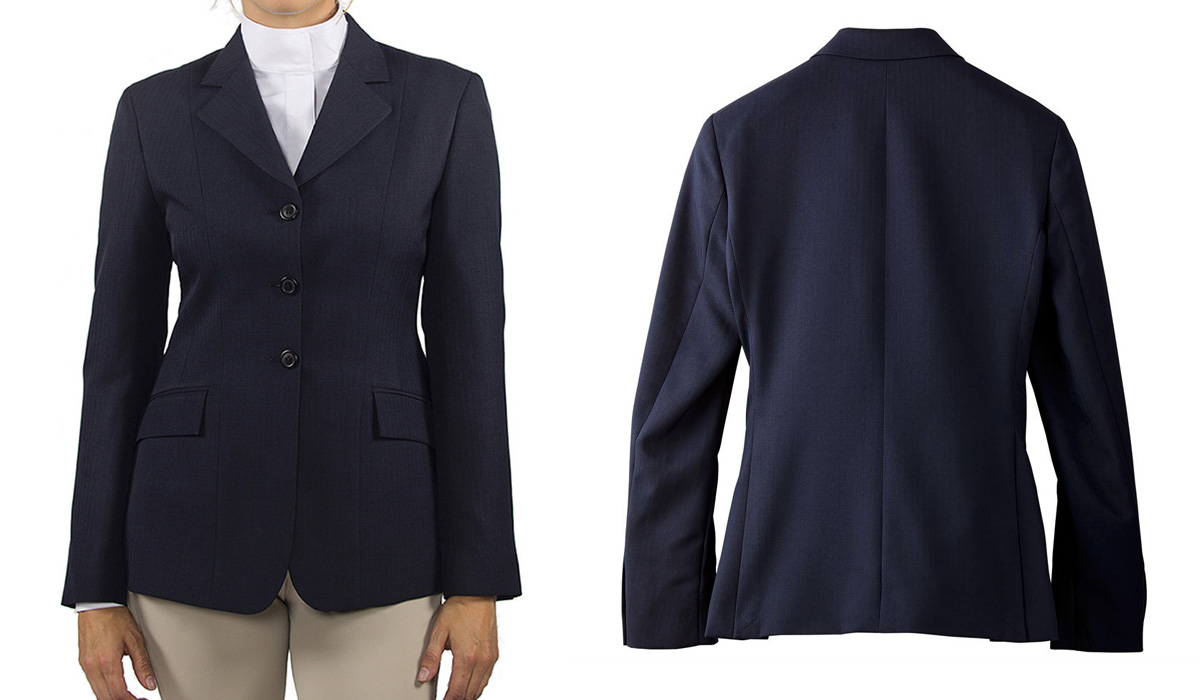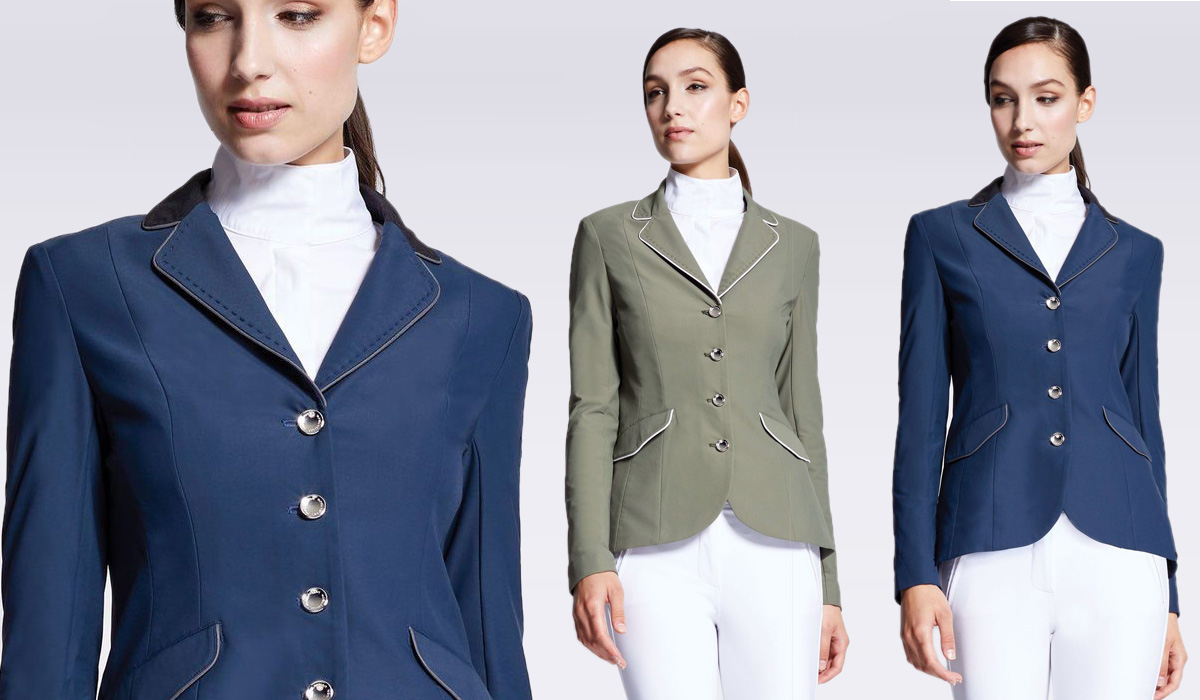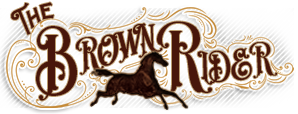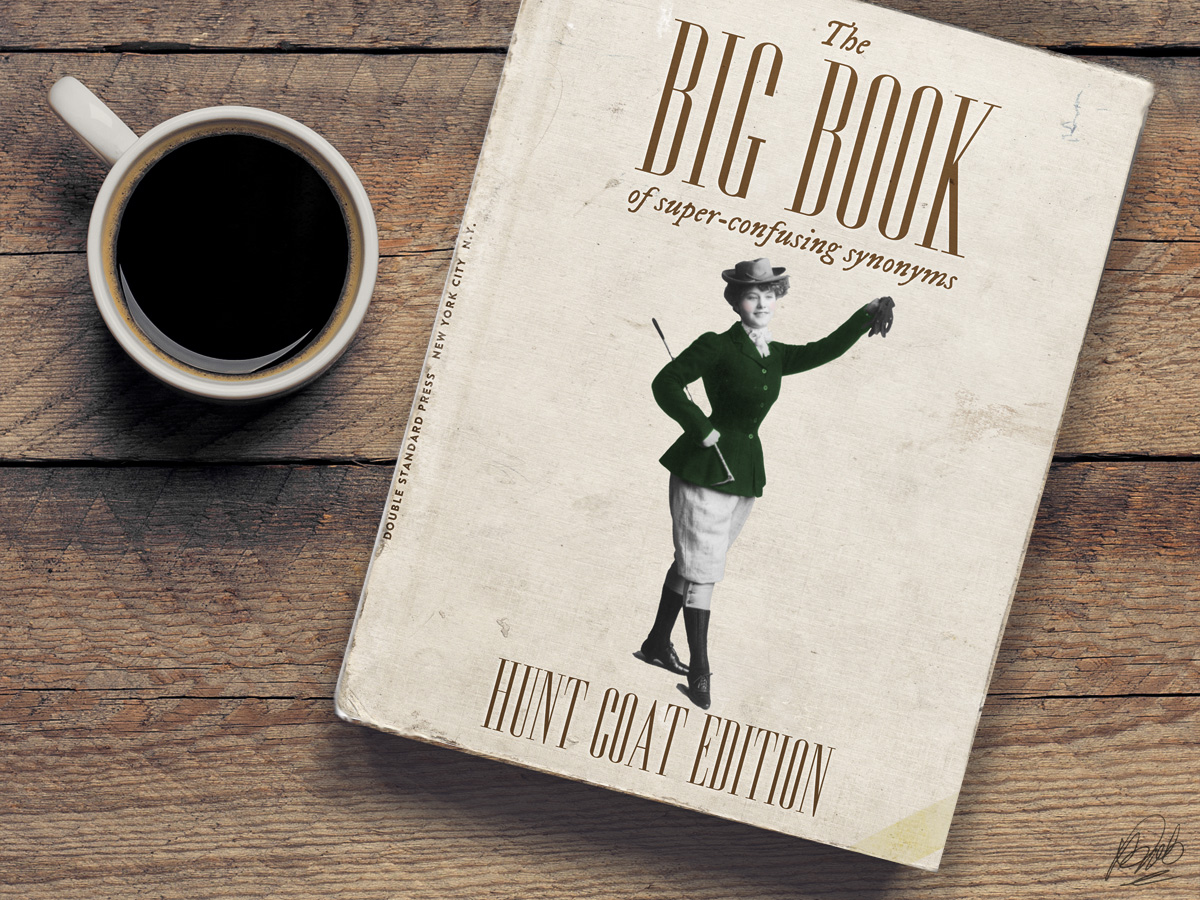If it's called a hunt coat, is it always a hunt coat? Usually. Is a show coat a hunt coat? Could be. Is a competition jacket a hunt coat? Sometimes. Is a riding jacket a hunt coat? It depends. The labels are applied so arbitrarily as to be interchangeable, even by the manufacturers.
Paint, Pinto, Quarter Horse and Appaloosa rules don't vary a lot where hunt seat attire is concerned. Even at the open show level, the stock breed standards carry over fairly consistently. For simplicity's sake, let's refer to what the [2018] AQHA rulebook says:
SHW320.3 In all English classes, riders should wear hunt coats of traditional colors such as navy, dark green, grey, black or brown. Maroon and red are improper. Breeches are to be of traditional shades of buff, khaki, canary, light grey or rust (or jodhpurs), with high English boots or paddock (jodhpur) boots of black or brown. Black, navy blue or brown hard hat (with harness for youth in any over fence classes) is mandatory. A tie or choker is required. Gloves, spurs of the unrowelled type that are blunt, round or that include a smooth rolling ball and no longer than one inch and crops and bats are optional. Hair must be neat and contained (as in net or braid). Judges must penalize contestants who do not conform.
The term "hunt coat" is actually rather vague in the rulebook. What is acceptable is predicated on what's currently passing as acceptable in the show ring. If you're fortunate enough to have a trainer or show friend guide you, you're well on your way to dressing the part. A reputable clothier can put you in what's correct, and what fits and flatters within your budget. Attending breed shows, reading breed magazines and participating in horse show forums are excellent resources to see real world examples of winning turnouts.
Hunt Coats
The style seen most often and accepted as proper in the stock breed show world is a 3 button, double vent back coat whose hemline ends approximately at your crotch, give or take. The coat's back length must not be so long you sit on it, nor so short your fanny isn't covered. Hunt coats have collars and lapels. The bottom of the lapel - the roll line - should begin no lower than your underarm and above the bustline. Solid navy, solid black, subtle pinstripes or herringbone weave over navy or black are the safest bets. If not wool, the fabric should be a wool blend or suiting fabric that appears like wool. Shiny, polyester and synthetic fabrics are typically a poor choice. Buttons should not be glitzy or loud, often solid color that match the coat fabric. Tailoring must be impeccable. Princess seams, two-panel sleeves and full lining are standard. Sleeves that are too short, baggy sleeves, baggy waists, too tight across the bust, back or shoulders are big no nos. |
| R.J. Classics Devon Show Coat in navy herringbone is a safe, conservative, classic choice for stock breed classes. |
Hunt Coat Variations:
Beyond the safe bets (above), competitors have expressed their style and individuality with bolder fabric and color choices, including velvet/colored collars and accent piping. Within the acceptable color spectrum, tone-on-tone stripes, checks and subtle plaids are very on-trend and seem pretty well tolerated at the breed show level. In equitation and horsemanship, the safe bets are by far the most popular, while the variations are more commonly seen in pleasure classes.
 |
| Custom jackets like these from Custom Collars Boutique offer fabric combinations and designer details that allow hunt seat riders to express their unique sense of style and coordinate every aspect of their presentation. |
Competition Jackets
Competition jackets feature updated hunt coat styling with European details; typically shorter length, trimmer through the body, often made with washable and stretch/technical fabrics. Details might include collar style variations, piping, decorative topstitching, pick stitching, contrast stitching, zipper pockets, and any variety of button styles, not to mention a rainbow of fashion colors. Several competition jackets could cross over well to stock breed hunter under saddle events, but they're generally designed for open jumping and eventing competition where European fashion has explored less conservative interpretations of traditional styles. |
| Noel Asmar Equestrian Competition Jackets feature fashion colors, 4 bright buttons, piping and collar detailing. The length is shorter, and the cut is trimmer than most hunt coats. Technical fabrics afford freedom of movement, comfort and washability. |
Show Coat
See Competition Jackets, above. Generally, tamer and more conservative than competition jackets. Depending on length, style and color, they may very well make an acceptable hunt coat.Riding Jackets
Riding jackets run the gamut between very conservative and traditional to sportswear styles. Riding jackets are often tailored with single vent backs, in longer lengths, sometimes longer lapels, and 3 or 4 button fronts. They come in solids, plaids, tweeds, heathers, houndstooth, and other color and pattern details that set them apart from standard issue hunt coats. Ironically, many of these are made by centuries-old - even famous - fashion houses in England and Europe, who happen to know a thing or two about "proper" English attire. In the stock breed hunt seat ring in America? Nope, not proper. Freedom fries! |
| Equetech Marlow Deluxe Tweed Riding Jacket offers the cut of a hunt coat with more pattern and color. |
Hacking Jacket
See Riding Jackets, above. Often shorter lengths, closer to a hunt coat. May have double or single vent back, 3 buttons or 4.Frock Coats
Wildly popular in Victorian and Edwardian fashion, frock coats were often worn as riding and foxhunting jackets back in the day. While still seen foxhunting, today they're more often associated as dressage or "Olympic" jackets here in the States. With new rules in dressage competition, the basic black or dark blue frock coat has been reinterpreted in a myriad of colors, cut, and detailing, including luxury accent fabrics and even rhinestones. While a solid color, 3 button, shorter length frock coat might squeak by in hunter under saddle classes, it may not be considered traditional in the eye of some judges. History says otherwise, but history isn't deciding who gets the ribbons. |
| (Left) Equetech Ladies Keeper Frock Riding Coat, 3 button style with double vent back (discontinued). (Right) Vintage Jean Hardy English Riding Jacket / Olympic Frock Coat pattern; 4 buttons, single vent style, darts in front and princess seams in back. |









Post a Comment